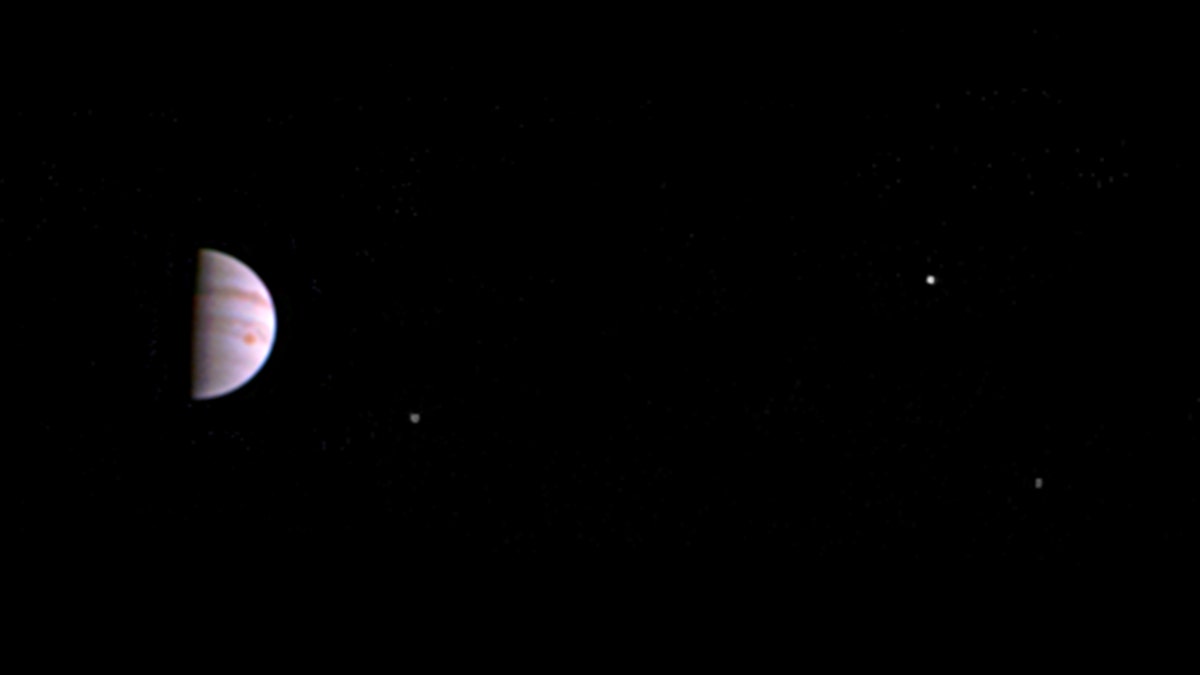
This color view from NASA's Juno spacecraft is made from some of the first images taken by JunoCam after the spacecraft entered orbit around Jupiter on July 5th (UTC). (NASA/JPL-Caltech/SwRI/MSSS)
NASA’s Juno spacecraft made a flashy arrival at Jupiter on July 4, and now, the probe has just passed another turning point in its mission.
Before Juno can start studying Jupiter up close as it orbits, it has to complete two big orbits, each of which lasts 53.5 days long. Currently in its first orbit, it has just made its way past the point most distant from Jupiter— five million miles away— and is now falling back towards the gas giant, with an arrival date of August 27.
Juno will be coming very close to the gas giant at the end of this month, cruising only 2,600 miles over Jupiter’s clouds. In fact, that’s the closest the craft will ever get to the planet during its mission.
After this coming pass, each orbit will be just a little bit further away from Jupiter, according to NASA.
“The altitude increases quite slowly at first, but during the last few orbits it ticks up a lot more,” a spokesman from NASA’s Jet Propulsion Laboratory told FoxNews.com in an email. “Even so, Juno's closest approach distance never exceeds about 4,900 miles.”
And while the craft’s scientific instruments weren’t switched on for its arrival, they will be during this coming close approach.
"We're in an excellent state of health, with the spacecraft and all the instruments fully checked out and ready for our first up-close look at Jupiter," Rick Nybakken, Juno project manager at NASA's Jet Propulsion Laboratory, said in a statement.
Juno’s mission includes studying the gas giant’s structure and magnetosphere, and because the planet is so ancient, scientists hope that understanding Jupiter will help them better understand how the solar system formed.
Follow Rob Verger on Twitter: @robverger